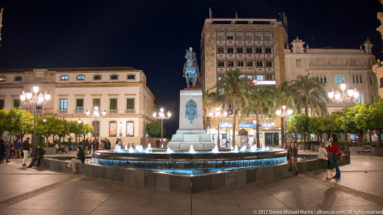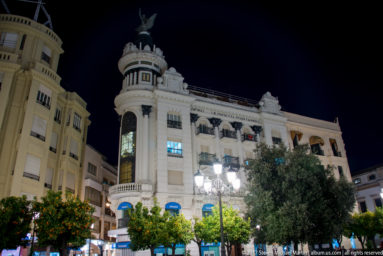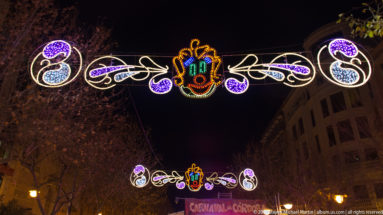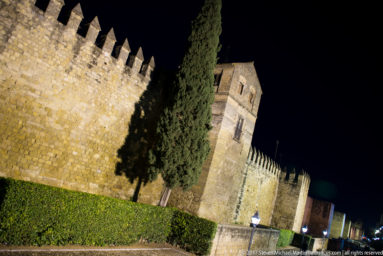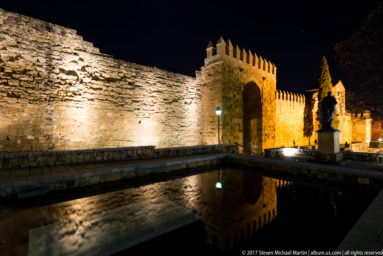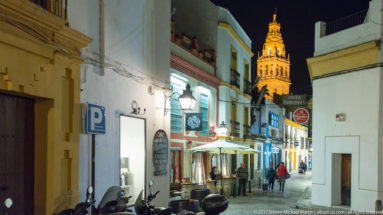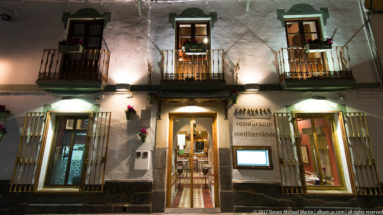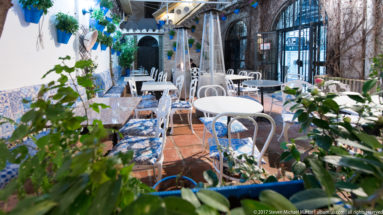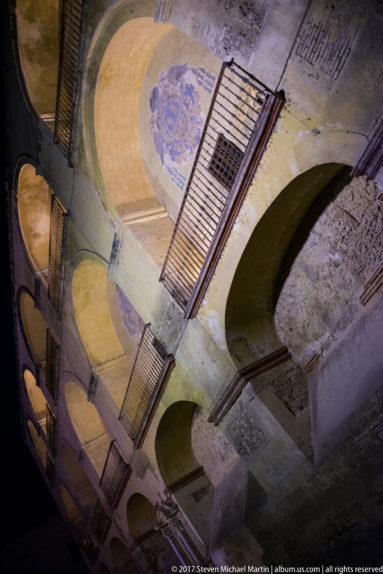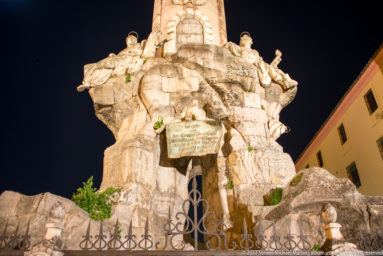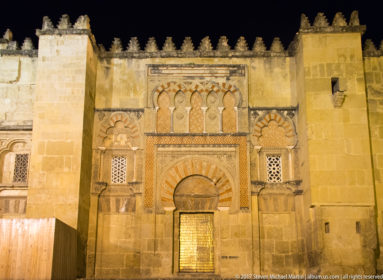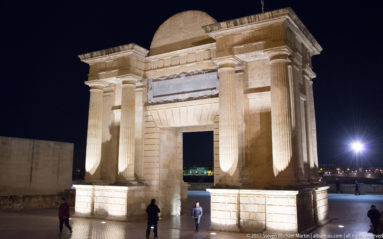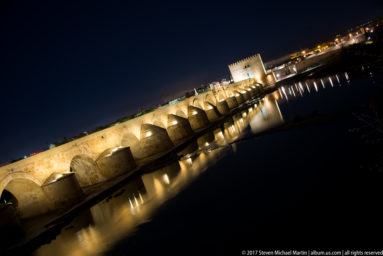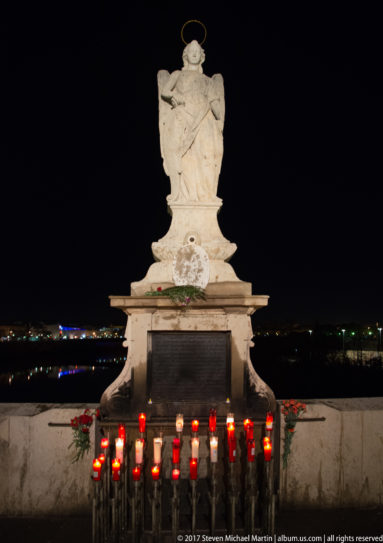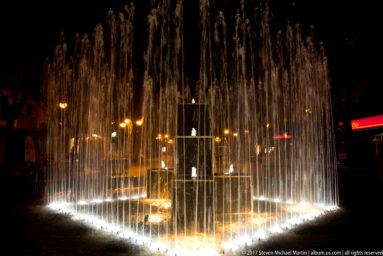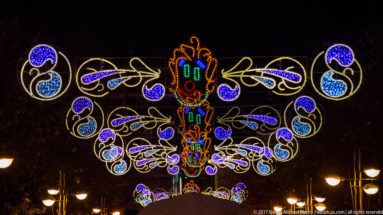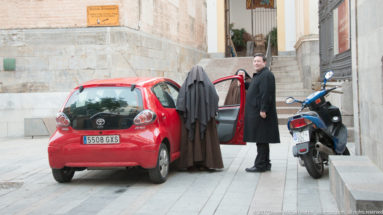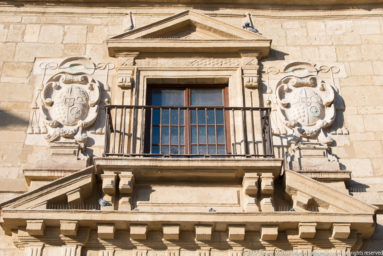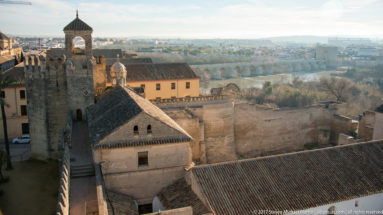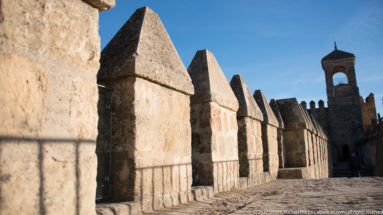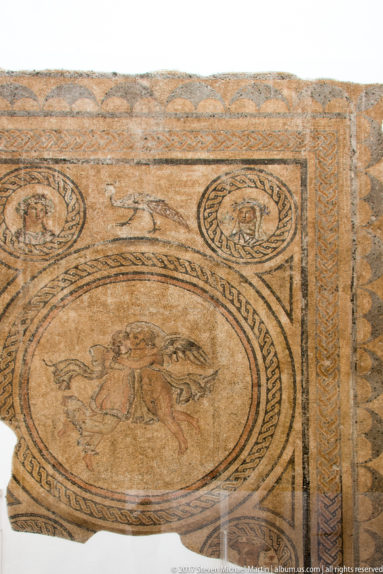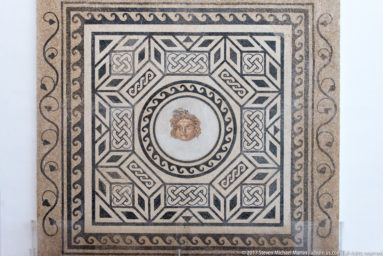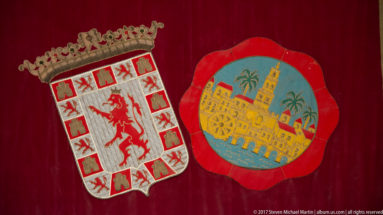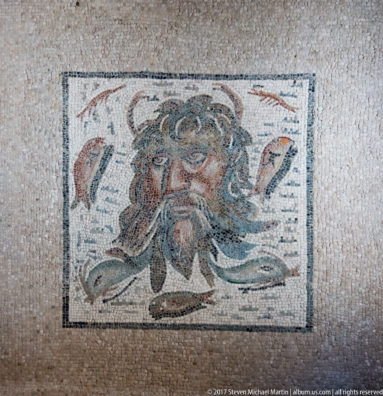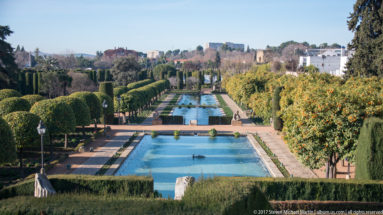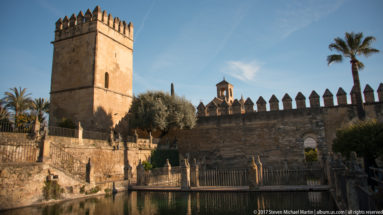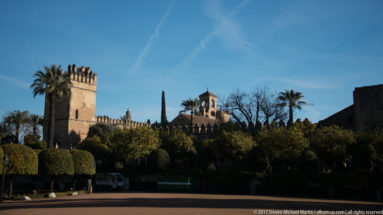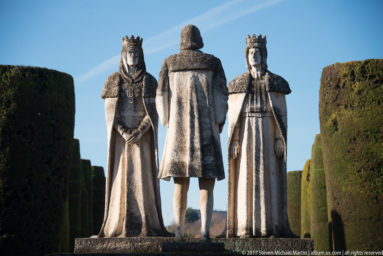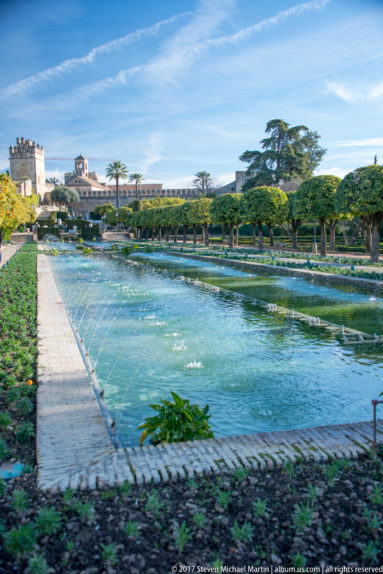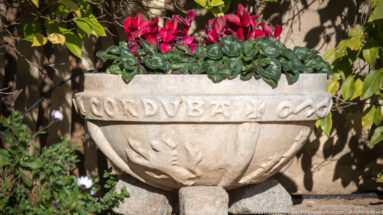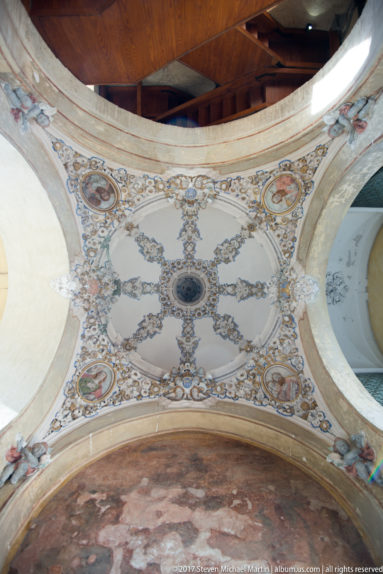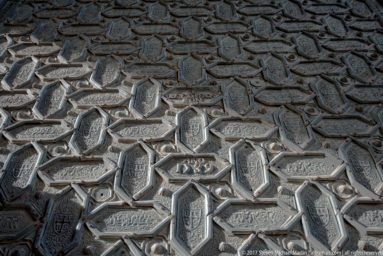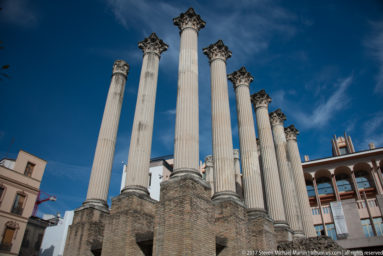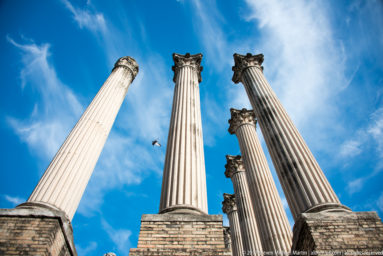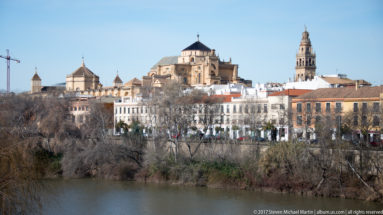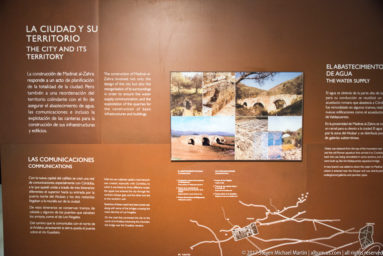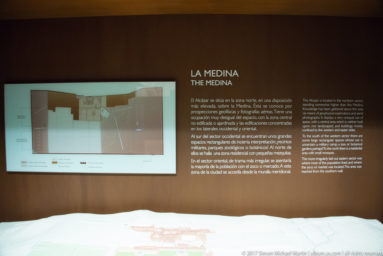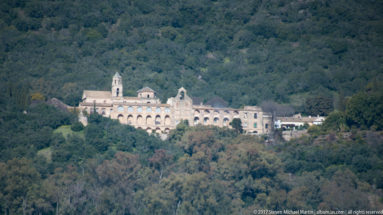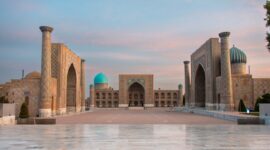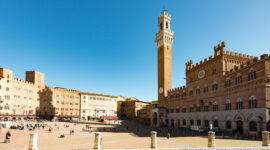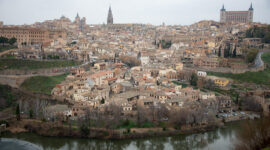Stop 12:
Highlights:
- The Roman Walls surrounding Cordoba were built after the Romans captured the city in 206 BC. The walls are now part of a UNESCO World Heritage site designating the town’s historic center.
- Mezquita (Mosque) – see this portfolio here. The Mezquita is Córdoba’s mosque that was converted to a Cathedral in the 13th century. It is so beautiful that it required its own portfolio.
- Alcázar de los Reyes Cristianos (Fortress of the Christian Monarchs). Built by Alfonso XI in 1328, the Alcázar is a Mudejar-style palace with splendid gardens. (The original Moorish Alcázar stood beside the Mezquita, on the site of the present Bishop’s Palace.). The Christopher Columbus statues and pools and fountains were located here.
- The Caliphal Baths are Arab baths located in the Cordoba’s historic center and part of the UNESCO World Heritage Site. Photos are below.
- Madinat Al-Zahra (Medina Azahara). This building no longer exists in full form. It is basically some ruins currently being restored and excavated and a museum. Abd ar-Rahman III built this massive building in the foothills of the Sierra Morena by for his favorite concubine, az-Zahra (the Flower) starting in 936 and continuing for 25 years. In 1013, it was sacked and destroyed by Berber mercenaries and wasn’t rediscovered until 1944.
Thanks to Fodor’s Travel Guides, Trip Advisor, and Wikipedia for the great lessons that helped me to plan and summarize this trip.


